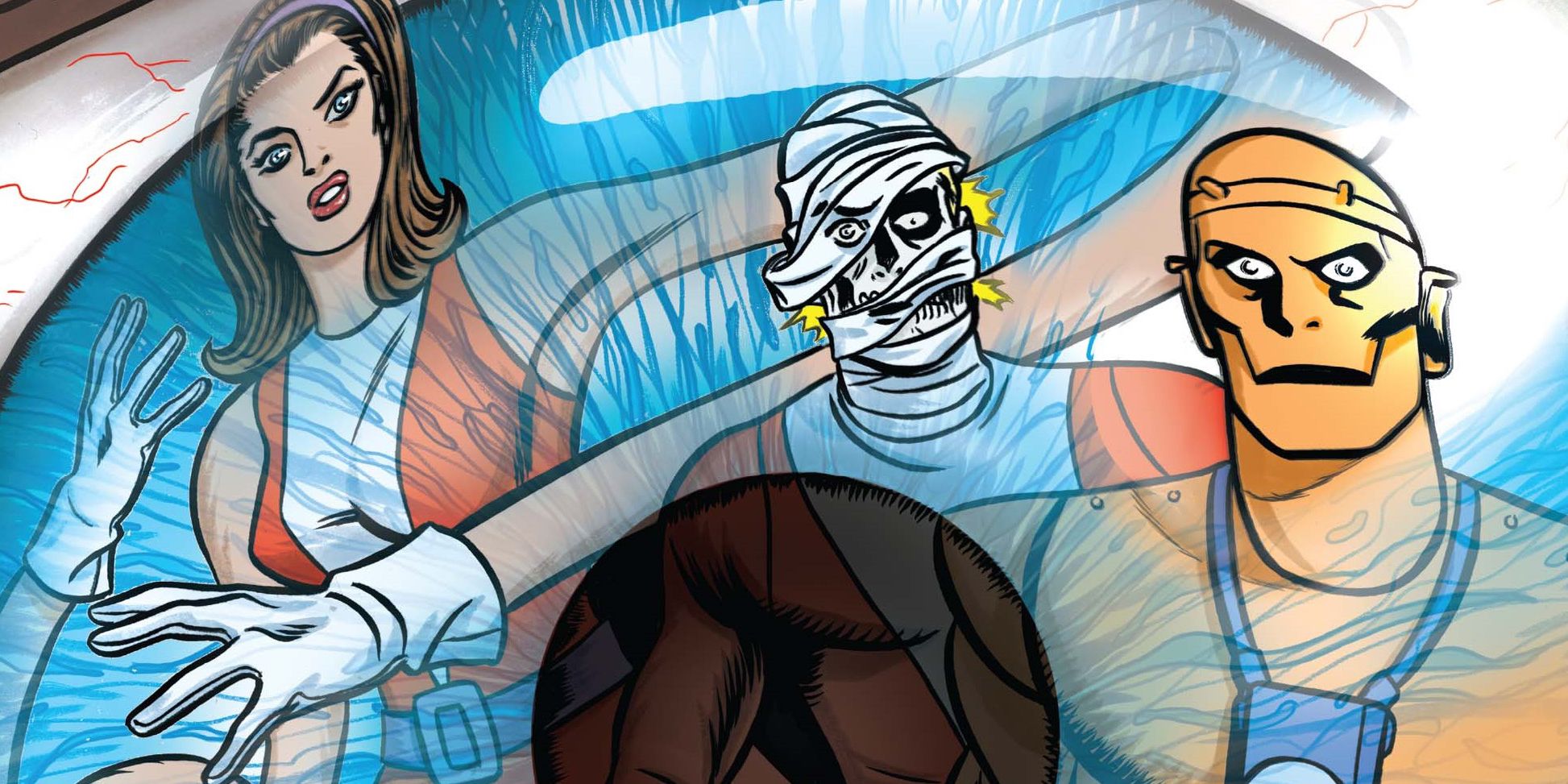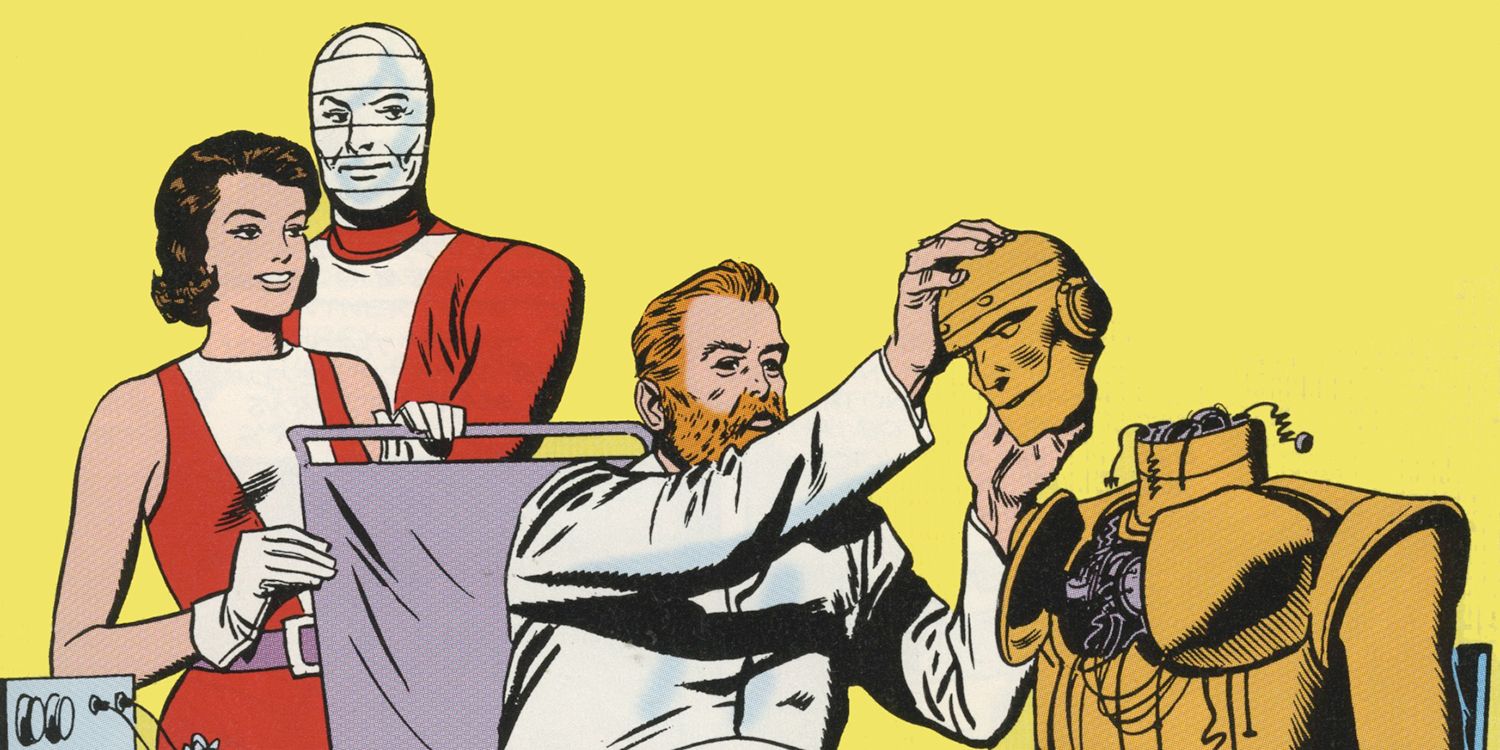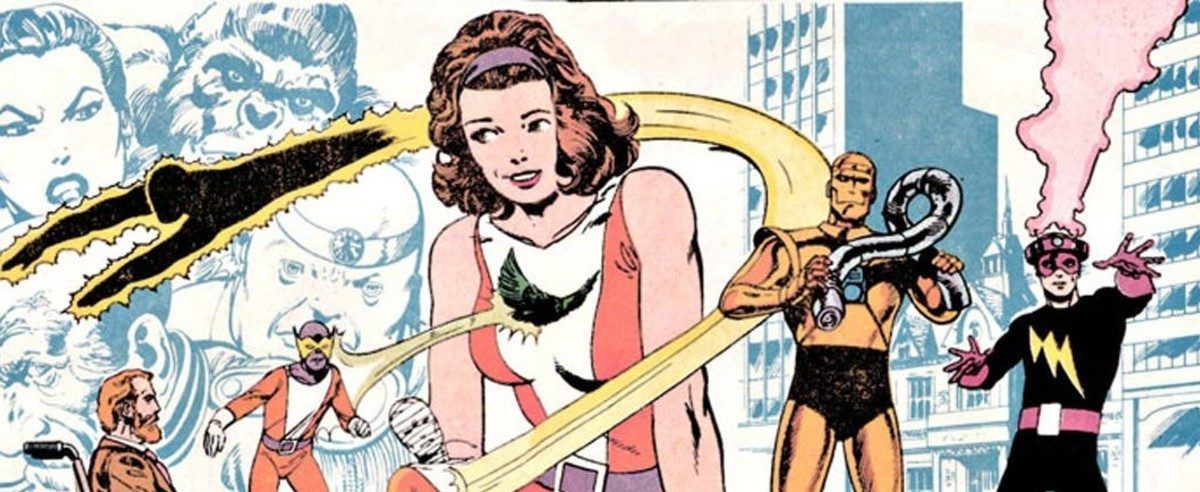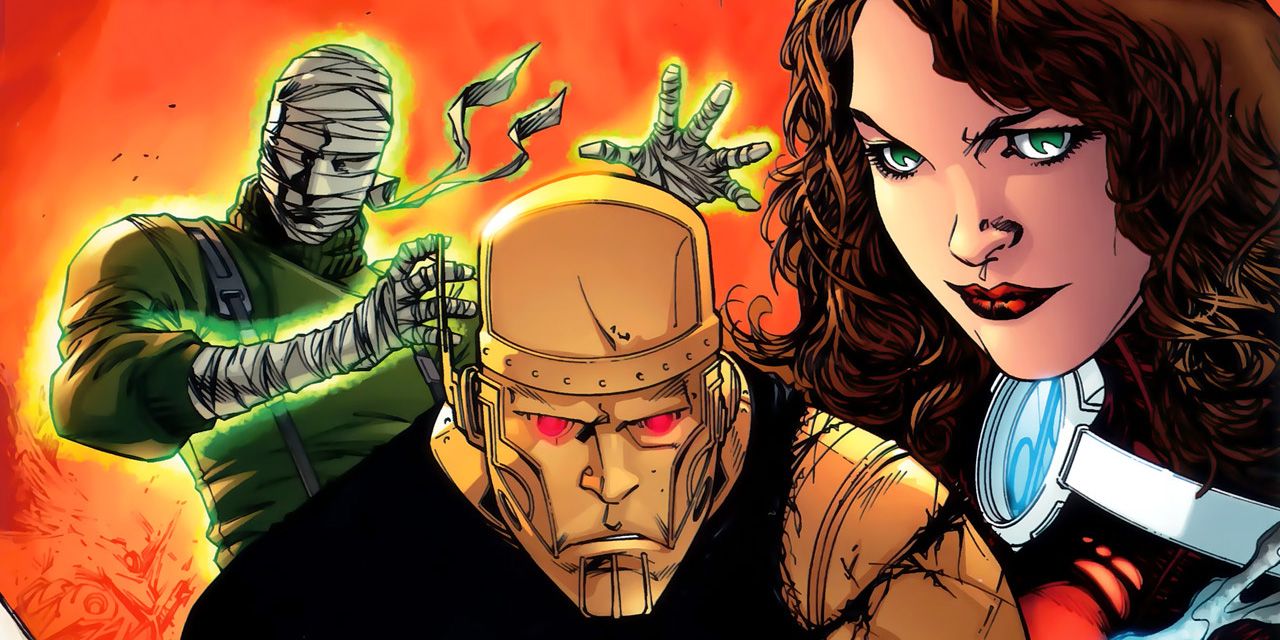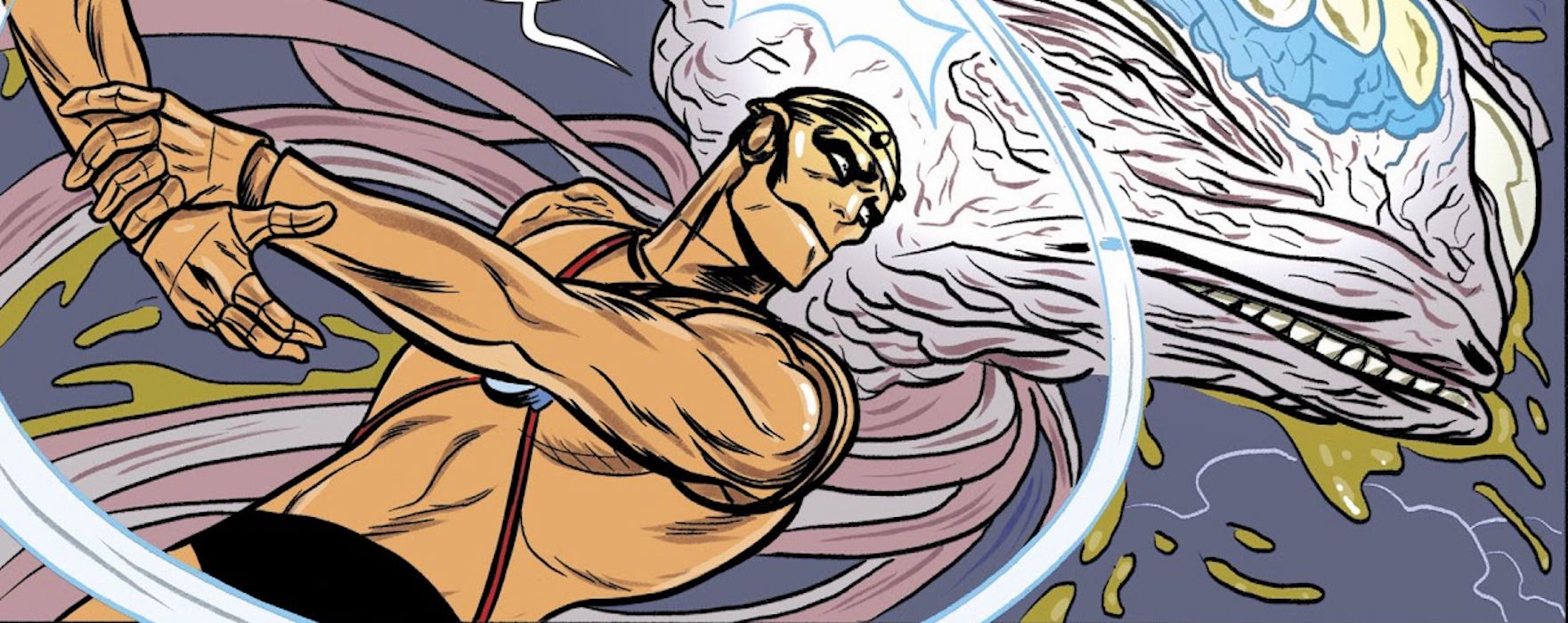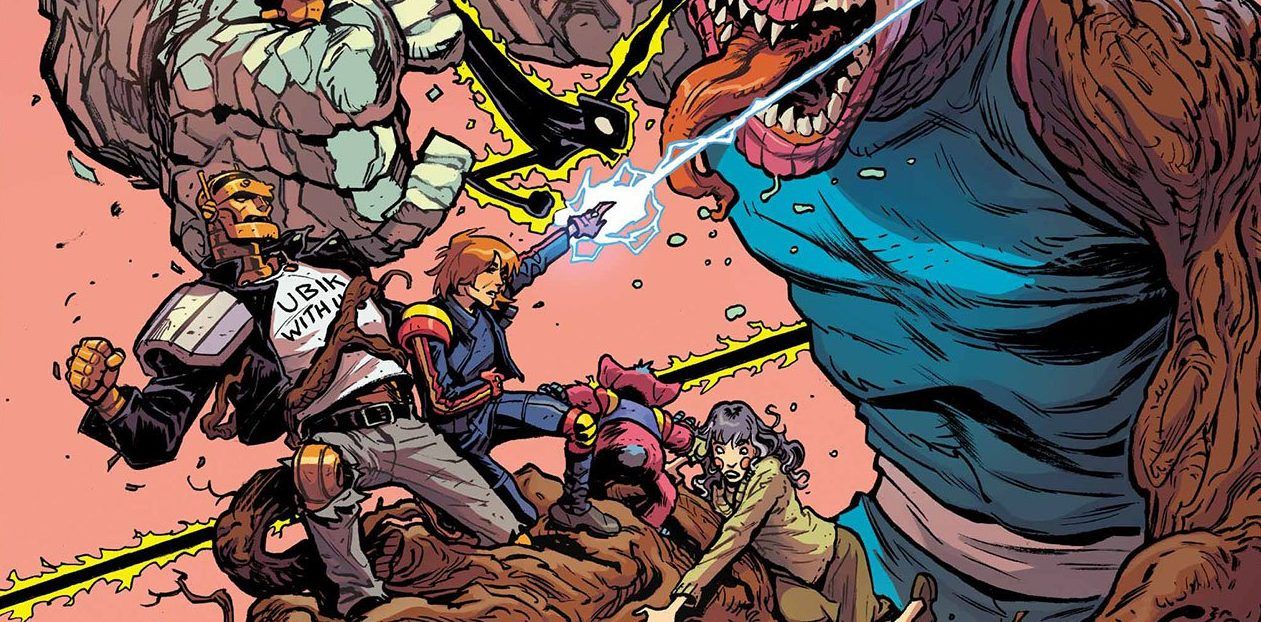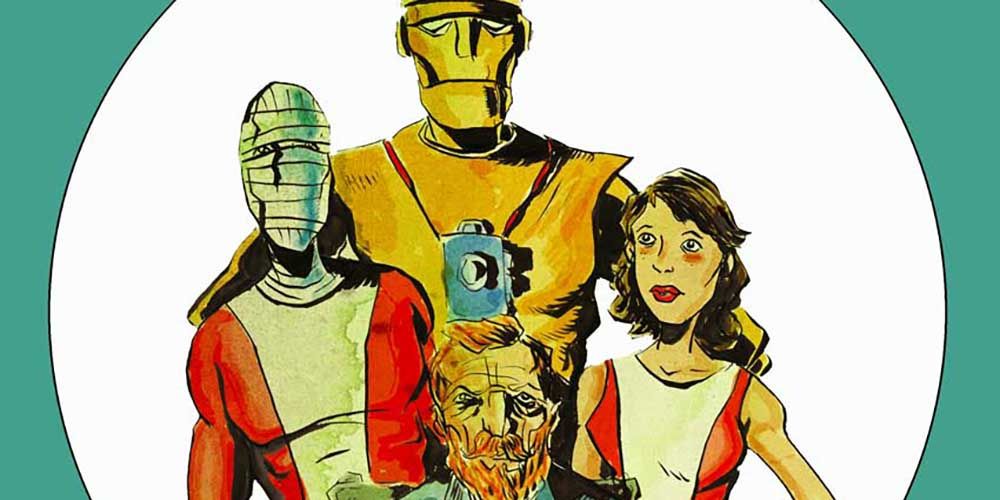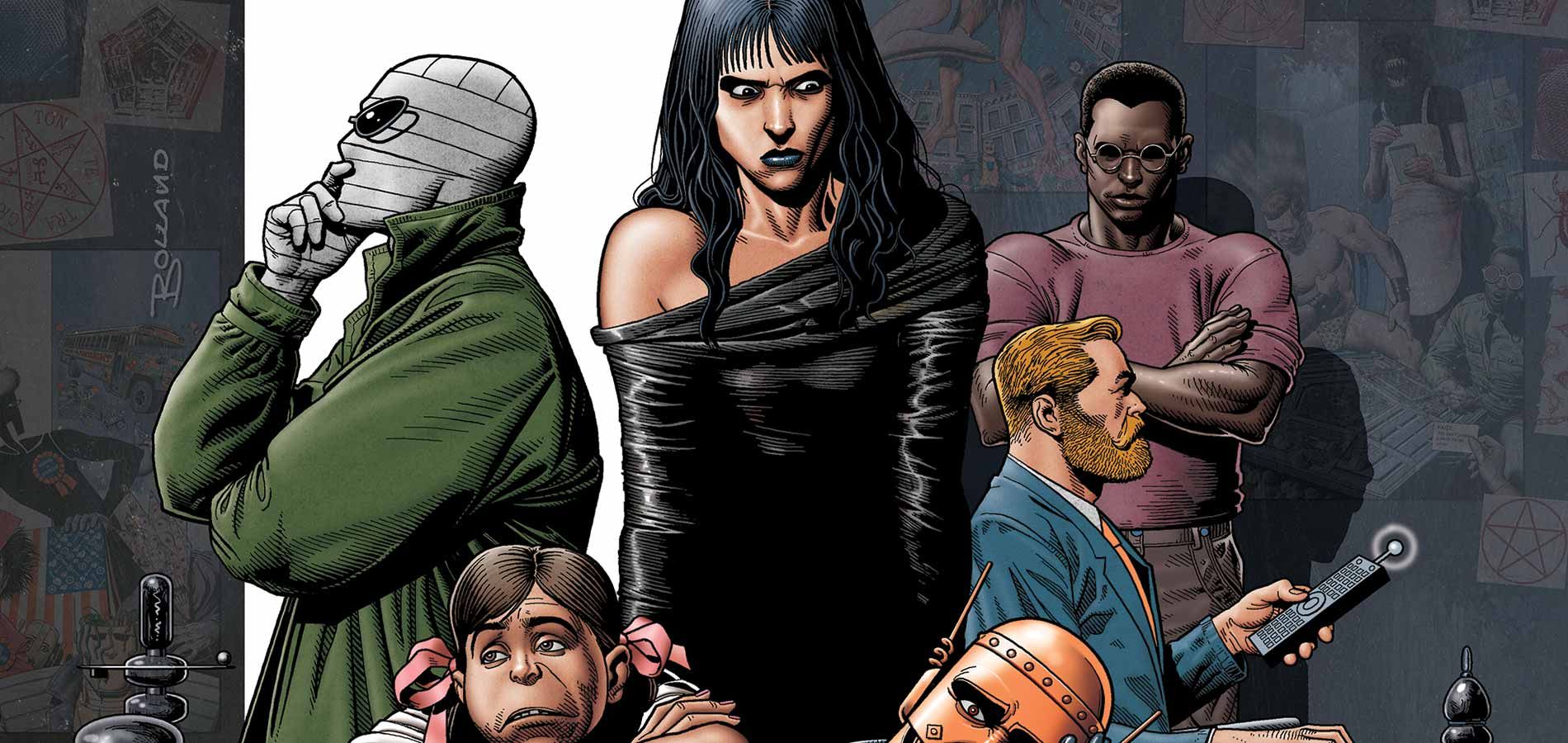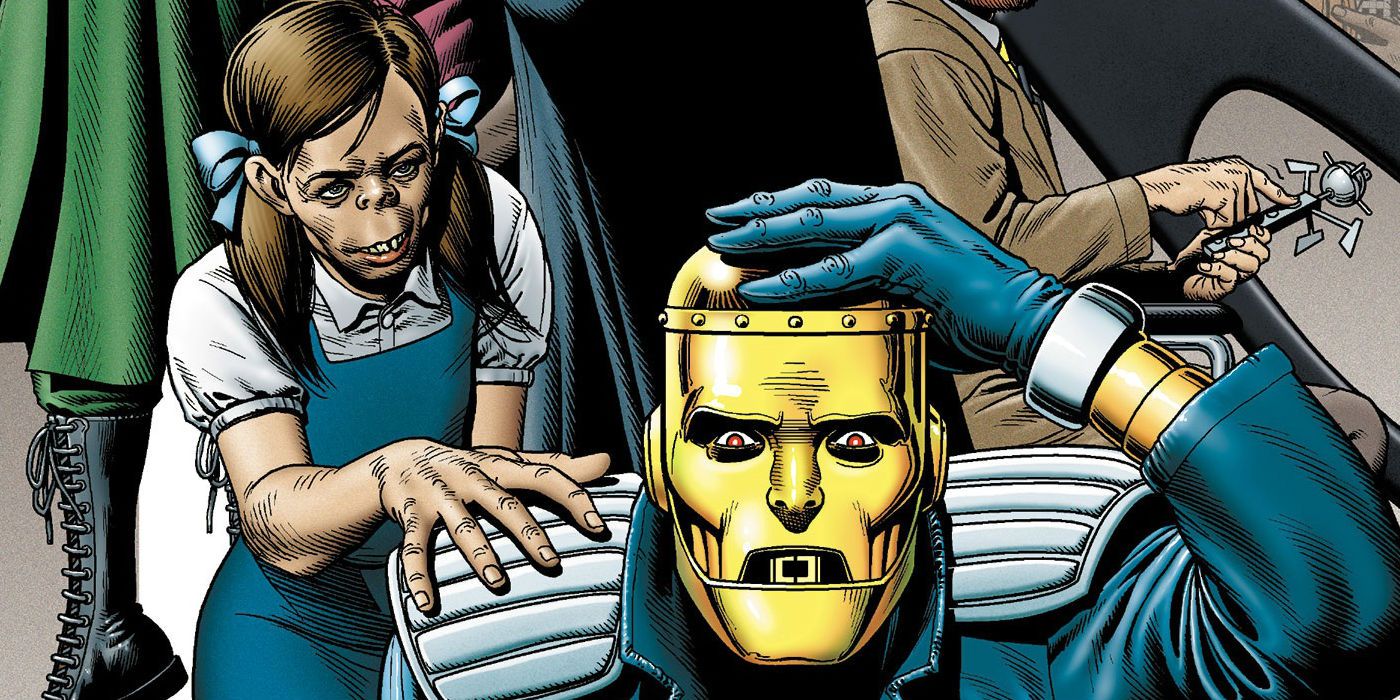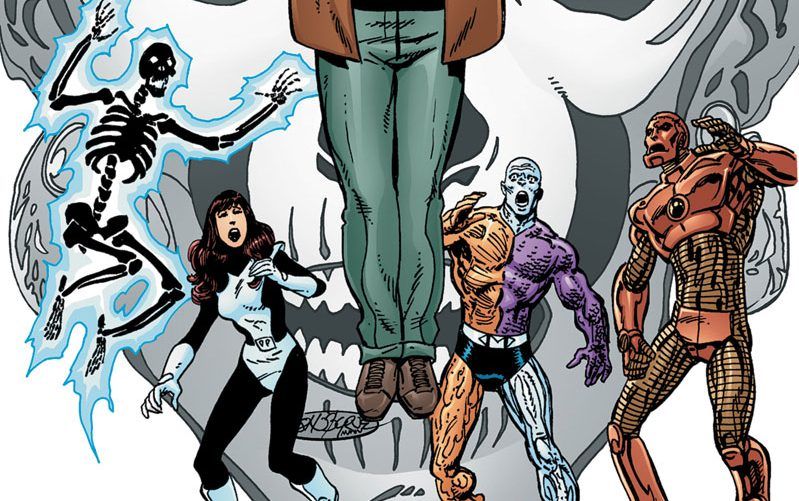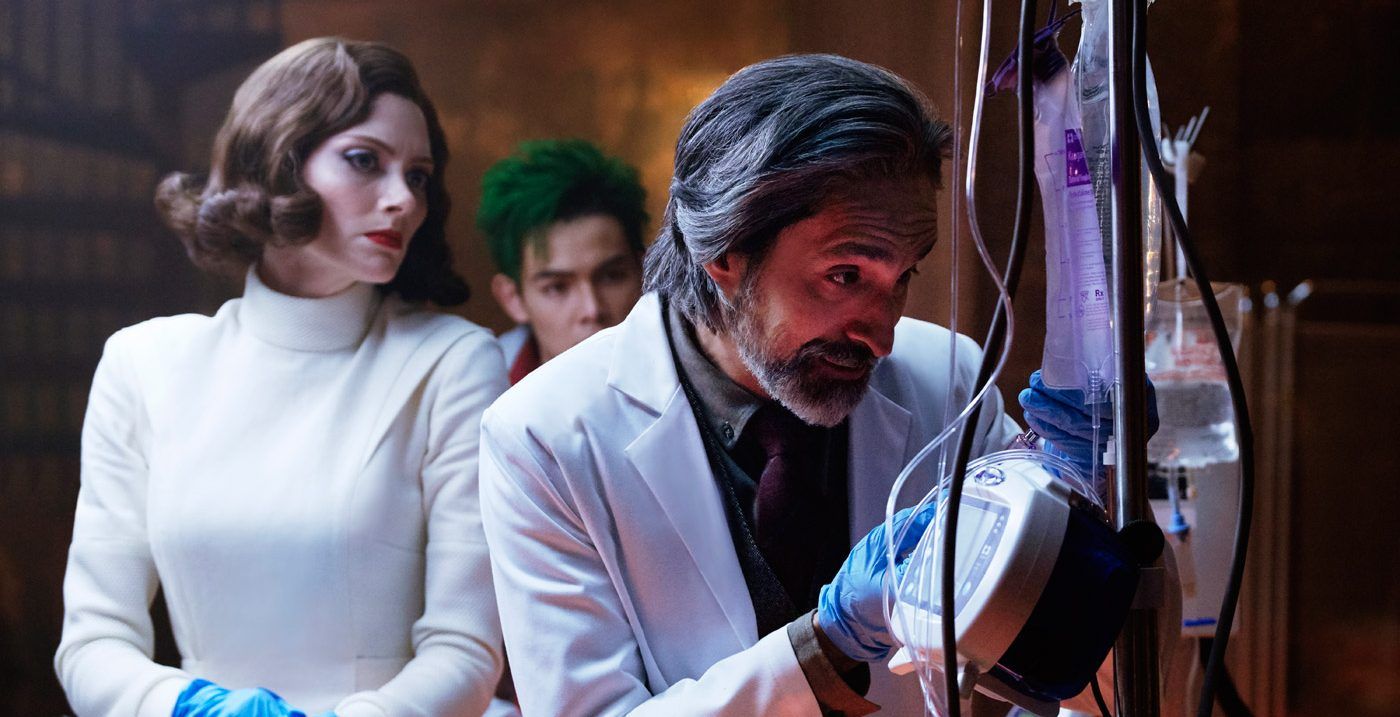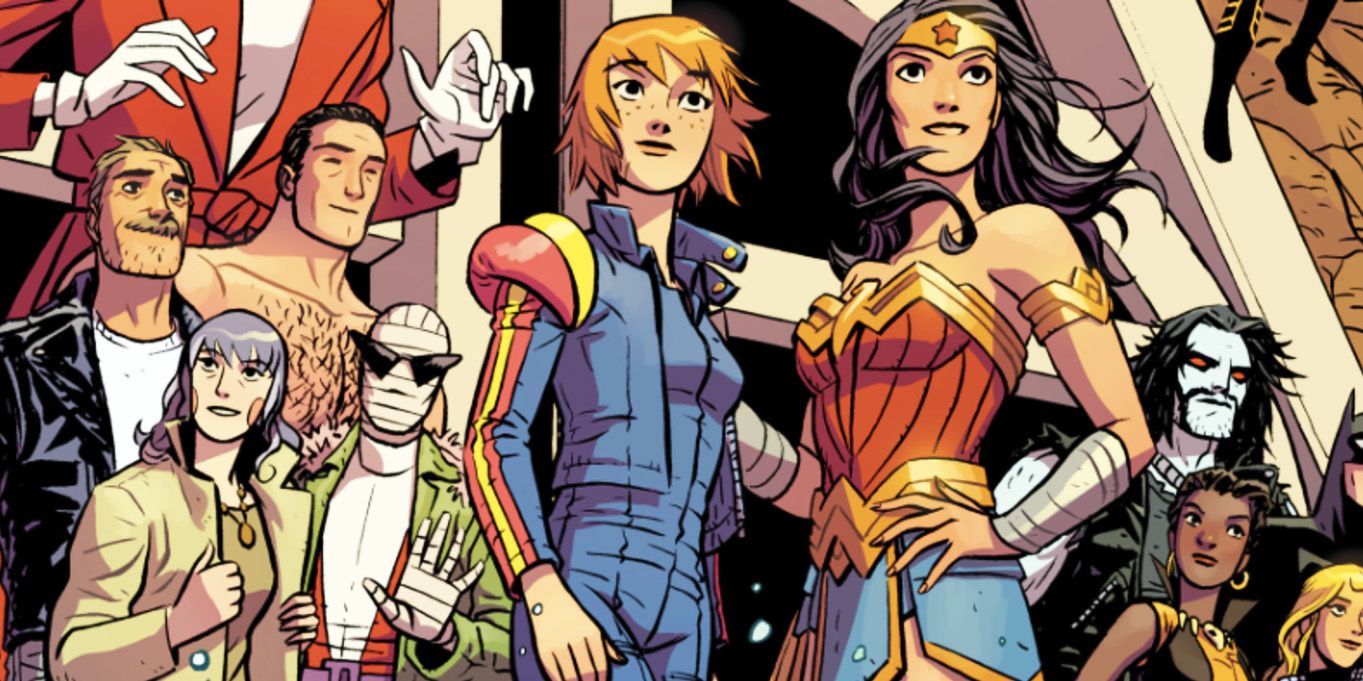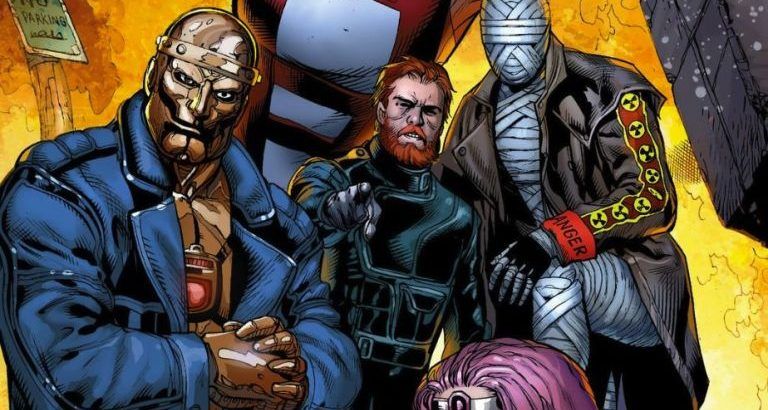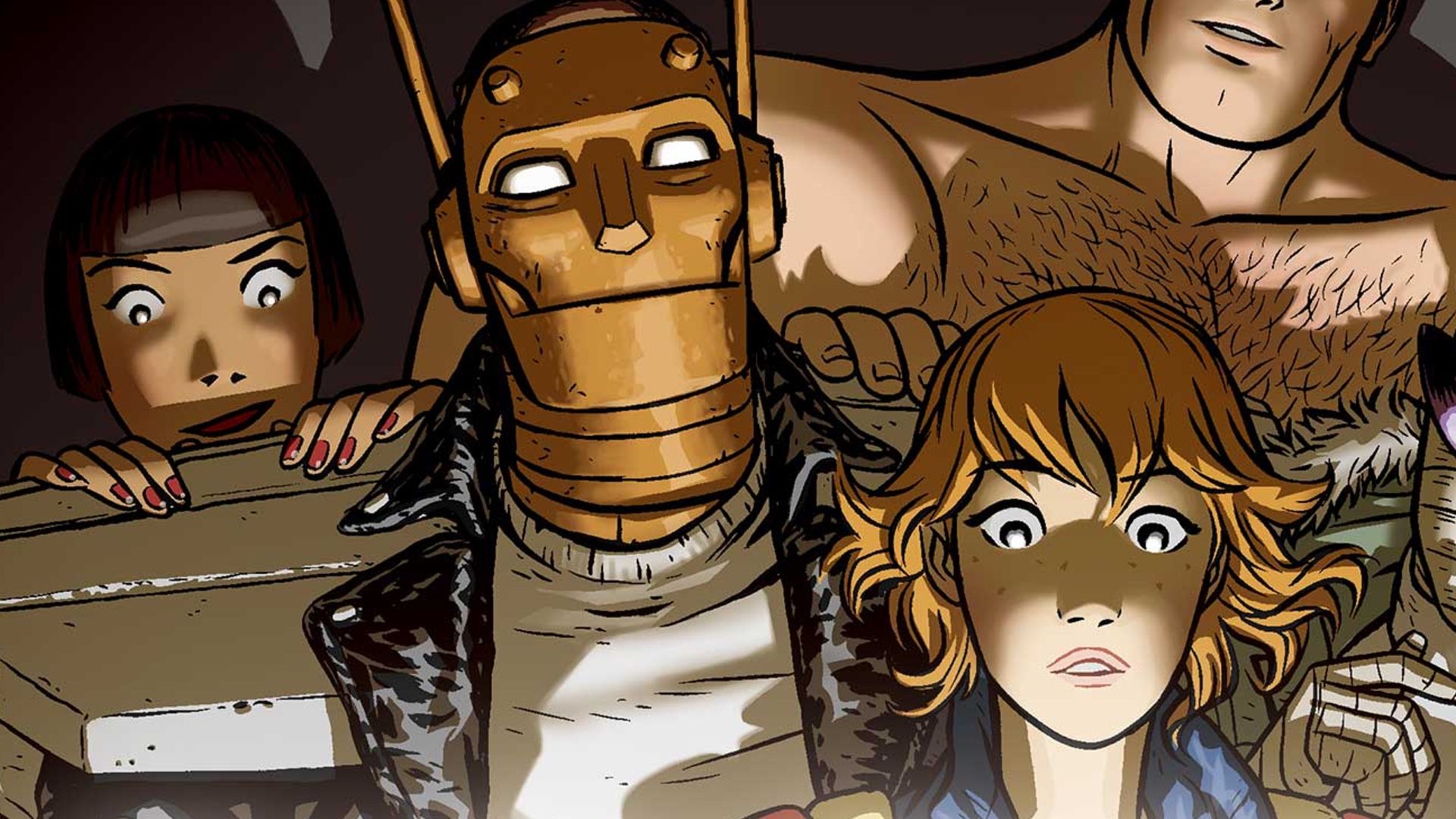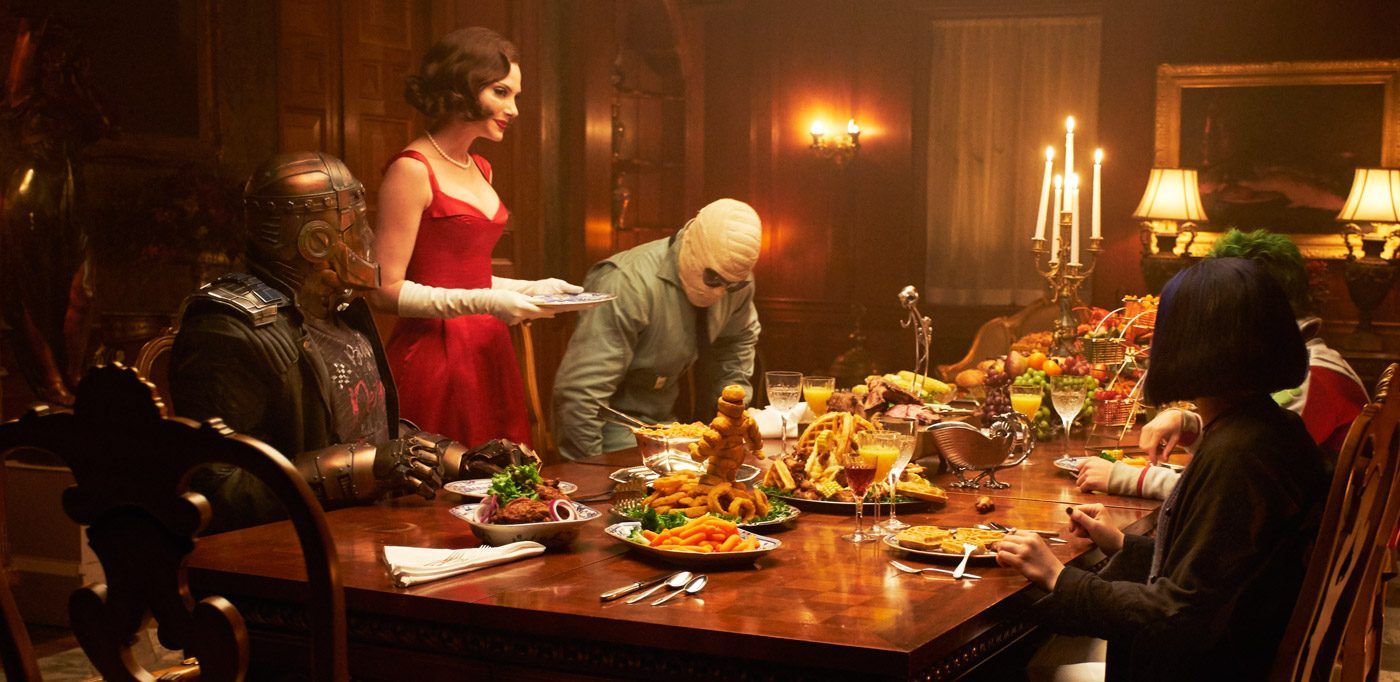The Justice League. The Teen Titans. The Legion of Super-Heroes. These are just some of DC’s most famous teams, but another assembly of heroes continues to hold a resilient presence in the DC Universe. The Doom Patrol may not have a lot of mainstream popularity, but this collection of outcasts has been a part of DC since 1963. With the nickname “the World’s Strangest Superheroes,” it’s only fitting that the group has been confined to the periphery of the DCU. Whenever the team ventures into the heart of DC, they stylistically clash with the more famous heroes. That may seem weird to say -- after all, we’re talking about a world where a billionaire dresses up like a bat and a man runs faster than the speed of light -- but the Doom Patrol is, frankly, too weird to fit in with the Justice League, which is actually the best thing about the group.
They don’t need to join forces with Superman every time Darkseid shows up. The Doom Patrol can exist all on their own, in a space where, under the right writer, they can thrive. Grant Morrison embraced the team’s bizarre nature and delivered what is considered to the the best run in the group’s history. As a part of the Young Animal imprint, Gerard Way (temporarily) revitalized the Doom Patrol. Clearly, the group has potential, which is why the DC Universe streaming service is making efforts to feature the team on its original programming. With the team recently making their live-action debut on Titans, we’ve decided to make a list of the most important things to know about the Doom Patrol.
17 DEBUTED IN 1963
Current DC fans might be surprised to hear that the Doom Patrol debuted in 1963. For 55 years, the group has held an inconsistent place in the DCU. After some initial success, the team that debuted in My Greatest Adventure #80 has struggled to find its place. The group continues to exist on the periphery of the DCU, with only occasional appearances alongside the main heroes.
The Doom Patrol was a friendlier version of the Suicide Squad, and the latter has enjoyed far more success for a variety of reasons. DC keeps trying to give new life to this classic team; maybe a run in the mainstream via the group’s upcoming TV show will change its fortunes.
16 SIMILAR TO THE X-MEN
Many reasons could explain why the Doom Patrol has struggled to find consistent success. For example, the group has many similarities to the X-Men, who debuted roughly three months later in September 1963. Both teams feature outcasts of society, and Marvel has created one of the most famous teams in comic book history. The company also continues to connect the X-Men’s stories to racism and a number of other real world issues that resonate with readers.
Meanwhile, while the Doom Patrol has tried to tackle similarly significant issues, the X-Men have been more effective. Another connection to the X-Men can be found with the respective founders of these groups -- Niles Caulder and Charles Xavier both initially set out to help people that society had cast out.
15 FANTASTIC FOUR PARALLELS
The X-Men aren’t the only team the Doom Patrol can be compared to. This group’s original, and most famous, lineup consists of Elasti-Girl, Negative Man, Robotman and the Chief. The quartet is fairly similar to Marvel’s Fantastic Four. Elasti-Girl is somewhat comparable to Mr. Fantastic, or Reed Richards, as both heroes can stretch their bodies, albeit in different ways.
Richards is also comparable to the Chief, or Niles Caulder because both characters are geniuses. Robotman, like the Thing, struggles to accept the loss of his physical humanity. The similarities don’t make the groups identical but there are some parallels.
14 RELUCTANT HEROES
Consider some of the most famous teams in comics. Several of them band together purposefully to fight crime. This origin story doesn’t necessarily hold true for the Doom Patrol -- they don’t view themselves as heroes and they don’t want the spotlight. Instead, they feel like freaks and outcasts because society treated them that way.
Caulder brings the group together and compels them to use their gifts to help people, regardless of the fact that society turned its back on them. This set-up is arguably intriguing, which makes it especially surprising that the Doom Patrol hasn’t enjoyed as much success as other teams.
13 WENT OUT WITH A BANG
The Doom Patrol stood out among DC’s other comics in the mid ’60s. While Marvel’s teams featured inner-group conflicts and turmoils, DC’s groups (back then) were relatively harmonious. So, Niles Caulder’s band of misfits offered a fresh dynamic, and the team and its villains were so bizarre that the series was fairly popular. However, by 1968, the Doom Patrol had lost its luster.
With the series’ popularity dwindling, DC pulled the plug and the writer, Arnold Drake, decided to have the group go out with dignity. In the final issue (Doom Patrol #121) the entire team sacrificed itself to stop Madame Rouge and General Zahl.
12 REBOOTED NINE YEARS LATER
Reboots are a staple of the comic book industry, as characters often get second chances, new creative teams take over, and so on. For example, the Doom Patrol has received six reboots, or six different series. After the dramatic ending in 1968, the group was dormant for nine years until an unsuccessful revival in 1977.
The new group, consisting of entirely new members other than Robotman, didn’t get its own series but they did make cameos in other stories. It took until 1987, nearly 20 years after the end of its first series, for the Doom Patrol to get its own series again. The new iteration was more of a superhero team, and this shift was somewhat responsible for the series’ lack of success.
11 A PERFECT FIT FOR GRANT MORRISON
DC, dissatisfied with the new series’ sales, tabbed Grant Morrison to be the new voice of the Doom Patrol. Morrison took over with Doom Patrol Vol. 2 #19 and he quickly made his mark on the series. In a lot of ways, Morrison was the perfect fit for this peculiar team.
Embracing the group’s strangeness, he brought in new characters and a rebooted lineup. Morrison introduced some of the team’s most famous characters, like Crazy Jane and Danny the Street. Under Morrison, the series also featured satire, parody and eclectic art style, including Dadaism. Morrison’s Doom Patrol is widely considered the team’s best run, and it has proven hard to match, let alone surpass.
10 PART OF THE VERTIGO IMPRINT
Despite some ventures into the main DCU, the Doom Patrol is usually on the outside looking in. This effect was never more apparent than in 1993, when the series shifted to DC’s Vertigo imprint with Doom Patrol Vol. 2 #64. This issue, the first one after Grant Morrison left, marked an unmistakable transition for the series. More than ever before, the new Doom Patrol dealt with significant real world issues including sexuality and gender.
This new run of the series lasted roughly two years before DC pulled the plug again in 1995. The Doom Patrol sat on the shelf for six years until the group returned to the main DCU in 2001.
9 UNSUCCESSFUL REBOOTS IN 2000S
In the the early 2000s, DC, once again, unsuccessfully tried to reboot the Doom Patrol. A lineup with Robotman, Kid Slick, Fever and Freak never caught on, and even a team with Elongated Man, Metamorpho and Beast Boy didn’t pan out. Another new team debuted in 2004 and this one proved to be one of the most controversial versions in the group’s history.
John Byrne erased all Doom Patrol continuity and erased the group’s previously established ties to the main DCU. A number of controversies derailed this series and it was nullified by the events of "Infinite Crisis", which restored the group’s lost continuity.
8 CAULDER: HERO AND VILLAIN
At times, the Chief can be viewed as a hero -- he just wanted to create the team in order to help people. Caulder, also known as the Chief, is usually the force that brings the Doom Patrol together. Using his genius-level intellect, Caulder saved the lives of the Doom Patrol’s members and went on to lead the group the way that Charles Xavier led his X-Men.
However, some writers have turned this narrative on its head. When Morrison took over the series, he built Caulder up as a legitimate villain. Since then, the Chief has toed the line between heroism and evildoing, and continues to occasionally cross it.
7 OCCASIONALLY FEATURES MAIN HEROES
At times, the Doom Patrol has included characters from the main DCU on its roster. At one point, the team consisted of Beast Boy, Doctor Light, Elongated Man and Metamorpho. After "Infinite Crisis", Malcolm Duncan, or Vox, and Bumblebee formed an association with the team. Even Element Woman, a member of the Justice League, joined the Doom Patrol during the team’s brief time in the spotlight during the New 52.
The Doom Patrol has proven that, at its best, it’s a team of misfits and oddities. Any time “real” heroes join the group, the team loses its identity. Hopefully, going forward, DC will allow the Doom Patrol to embrace its individuality.
6 15 SECONDS OF FAME IN NEW 52
The Doom Patrol made a brief return during the New 52. The team’s 1977 lineup (Celsius, Negative Man and Joshua Clay) appeared in Justice League #24, along with Karma and Scott Fischer. The group was involved with the "Forever Evil" event, and a new iteration of the team debuted afterwards.
The new Doom Patrol briefly fights with the Justice League and Lex Luthor reveals that Caulder is a villain who is responsible for the accidents that gave the members their powers (this storyline had been explored previously). Subsequently, the team faded into obscurity for a few more years before another revival in 2016.
5 YOUNG ANIMAL REVIVES THE TEAM
In 2016, the Doom Patrol made a triumphant return under DC’s Young Animal imprint. Writer Gerard Way, the co-founder of the imprint and former lead singer of My Chemical Romance, breathed new life into the team by using some classic characters and created some new ones. Way has been compared to Grant Morrison, and the latter’s influence is apparent in the newest iteration of Doom Patrol.
Niles Caulder and Danny the Street are some of the series’ main characters, along with Casey Brinke and Doodle Bug. Though the Young Animal imprint is on a hiatus, the Doom Patrol is one of its priorities. It’s only a matter of time before the team returns yet again.
4 LIVE-ACTION DEBUT
Despite struggling to find success in the comics, the Doom Patrol is getting a run in the spotlight on the DC Universe streaming service. The team guest starred in an episode of Titans and this appearance set up its own upcoming series.
DC pulled together a star-studded lineup for the group. Brendan Fraser, along with Riley Shanahan, will bring Robotman to life. Alan Tudyk will play Mr. Nobody and, as the voice of Negative Man, Matt Bomer stole the show in the Titans episode. Fans should be excited to see what the team can do with its own show, which will premiere next year.
3 ANIMATED APPEARANCES
Titans didn’t mark the first time the Doom Patrol appeared outside the comic books. In the fifth season of the fan-favorite Teen Titans animated show, the titular team met the Doom Patrol. The two-part episode, titled "Homecoming", featured a look at Beast Boy’s time with the team (this story was loosely adapted in the Doom Patrol’s aforementioned live-action appearance). The two teams work together to stop one of their shared antagonists, the Brotherhood of Evil.
Robotman and his teammates also appeared in an episode of Batman: the Brave and the Bold, which loosely adapted the dramatic ending of the team’s first series.
2 BIZARRE VILLAINS
There’s no way to overstate just how outlandish Morrison’s Doom Patrol was. In order to match the series’ bizarre nature, Morrison created villains who were remarkably unusual. The team fought Red Jack, an incredibly powerful character who thought he was Jack the Ripper and God. Then, there was the Brotherhood of Dada, a group with members like Sleepwalk (whose powers were only accessible when she’s asleep) and the Quiz, who was most known for his fear of dirt.
Let’s not forget the Scissormen, who used their scissor-like hands to literally cut people out of reality. With Morrison at the controls, the Doom Patrol fought increasingly whacky villains.
1 COAGULA
Under Rachel Pollack, the pages of the Doom Patrol series considered societal issues like gender identification. To do so, the writer introduced a number of new characters, including Coagula, or Kate Godwin. This creation is particularly notable because Coagula is one of the first superheroes of her kind in the history of comic books.
Godwin was rejected by the Justice League due to the taboo nature of her powers but Coagula fit right in with the Doom Patrol. One of her family-friendly abilities includes the ability to coagulate any solid into liquid and vice versa. Godwin, having debuted in 1993, might have been a little ahead of her time but she would have likely found more success in contemporary comics.

